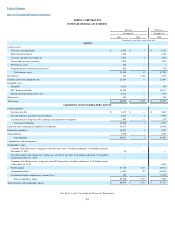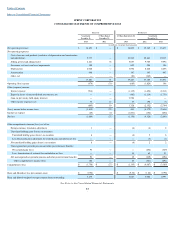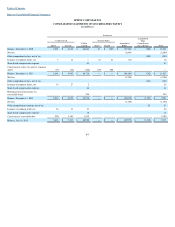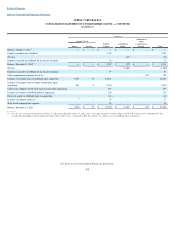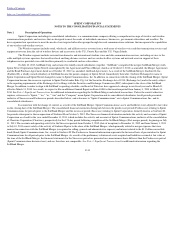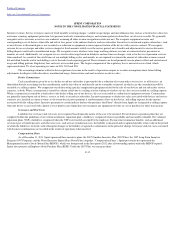Sprint - Nextel 2013 Annual Report Download - page 131
Download and view the complete annual report
Please find page 131 of the 2013 Sprint - Nextel annual report below. You can navigate through the pages in the report by either clicking on the pages listed below, or by using the keyword search tool below to find specific information within the annual report.
Table of Contents
Index to Consolidated Financial Statements
SPRINT CORPORATION
NOTES TO THE CONSOLIDATED FINANCIAL STATEMENTS
changes, if any, related to management's strategic objectives, technological changes or obsolescence. Repair and maintenance costs and research and
development costs are expensed as incurred.
We capitalize costs for network and non
-
network software developed or obtained for internal use during the application development stage. These
costs are included in PP&E and, when the software is placed in service, are depreciated over estimated useful lives of
3
to
5
years. Costs incurred during the
preliminary project and post
-
implementation stage, as well as maintenance and training costs, are expensed as incurred.
Investments
Short
-
term investments are recognized at amortized cost and classified as current assets on the consolidated balance sheets when the original
maturities at purchase are greater than three months but less than one year. Certain investments are accounted for using the equity method based on the
Company's ownership interest and ability to exercise significant influence. Accordingly, the initial investment is recognized at cost and subsequently adjusted
to recognize the Company's share of earnings or losses of the investee in each reporting period subsequent to the investment date.
Long
-
Lived Asset Impairment
Sprint evaluates long
-
lived assets, including intangible assets subject to amortization, for impairment whenever events or changes in circumstances
indicate that the carrying amount of an asset group may not be recoverable. Asset groups are determined at the lowest level for which identifiable cash flows are
largely independent of cash flows of other groups of assets and liabilities. When the carrying amount of a long
-
lived asset group is not recoverable and exceeds
its fair value, an impairment loss is recognized equal to the excess of the asset group
’
s carrying value over the estimated fair value. See Note 9. Severance, Exit
Costs and Asset Impairments for additional information on asset impairments.
Certain assets that have not yet been deployed in the business, including network equipment, cell site development costs and software in
development, are periodically assessed to determine recoverability. Network equipment and cell site development costs are expensed whenever events or
changes in circumstances cause the Company to conclude the assets are no longer needed to meet management's strategic network plans and will not be
deployed. Software development costs are expensed when it is no longer probable that the software project will be deployed. Network equipment that has been
removed from the network is also periodically assessed to determine recoverability. If we experience significant operational challenges, including retaining and
attracting subscribers, future cash flows of the Company may not be sufficient to recover the carrying value of our wireless asset group, and we could record
asset impairments that are material to Sprint's consolidated results of operations and financial condition.
Indefinite
-
Lived Intangible Assets
Our indefinite
-
lived intangible assets primarily consist of goodwill, FCC licenses acquired primarily through FCC auctions and business
combinations to deploy our wireless services, and certain of our trademarks. Goodwill represents the excess of consideration paid over the estimated fair value
of the net tangible and identifiable intangible assets acquired in business combinations. In determining whether an intangible asset, other than goodwill, is
indefinite
-
lived, we consider the expected use of the assets, the regulatory and economic environment within which they are being used, and the effects of
obsolescence on their use. We assess our indefinite
-
lived intangible assets for impairment at least annually, which occurs during the first quarter or, if
necessary, more frequently, whenever events or changes in circumstances indicate the asset may be impaired. Such indicators may include a sustained,
significant decline in our market capitalization since our previous impairment assessment, a significant decline in our expected future cash flows, a significant
adverse change in legal factors or in the business climate, unanticipated competition, and/or slower growth rates, among others.
F
-
13



